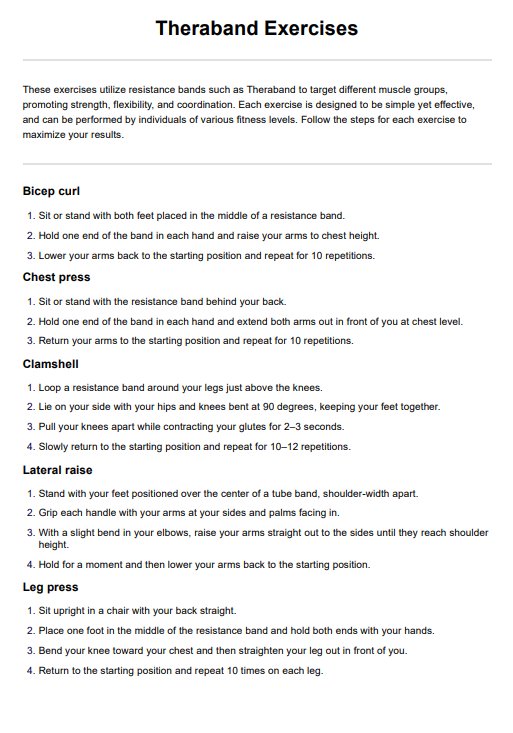Theraband exercises are used by individuals of all fitness levels and ages, including athletes, physical therapy patients, and fitness enthusiasts.

Theraband Exercises PDF
Incorporate this free Theraband Exercises PDF into your toolkit and guide your clients through effective resistance band workouts.
Use Template
Theraband Exercises PDF Template
Commonly asked questions
Theraband exercises can be part of a rehabilitation program for recovering from injuries and improving strength, flexibility, and mobility during fitness routines.
To use Theraband exercises, follow the instructions for each exercise, ensuring proper form and technique while gradually increasing resistance for progression.
EHR and practice management software
Get started for free
*No credit card required
Free
$0/usd
Unlimited clients
Telehealth
1GB of storage
Client portal text
Automated billing and online payments











